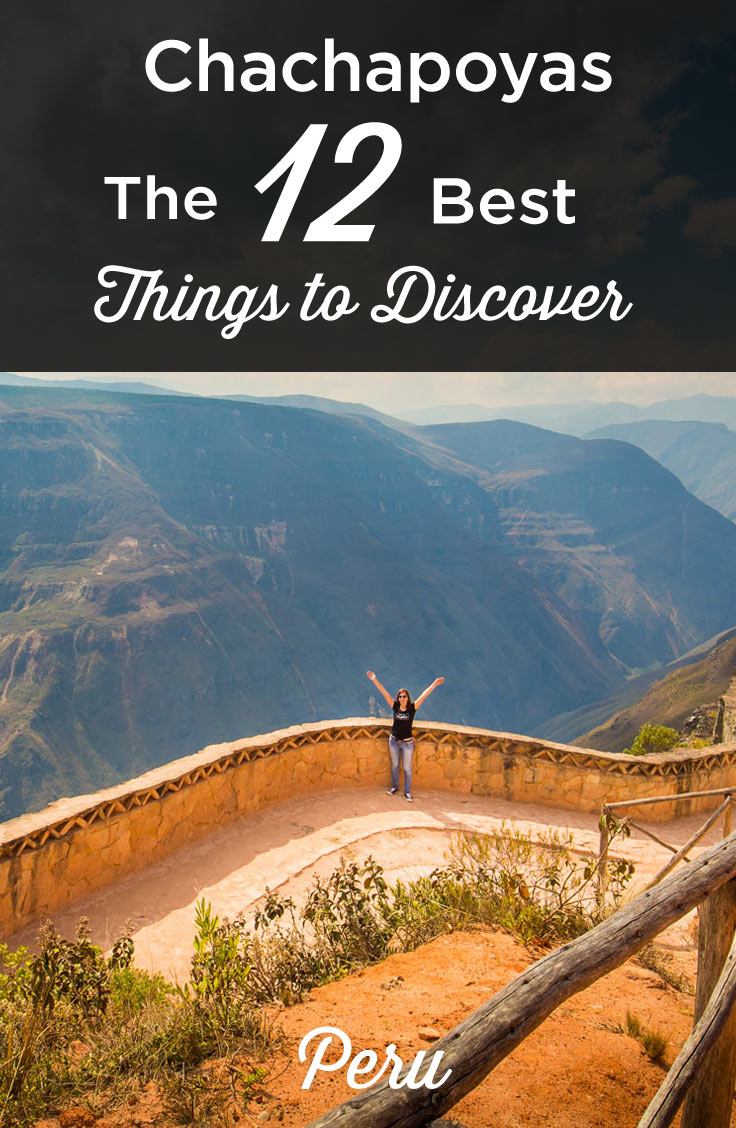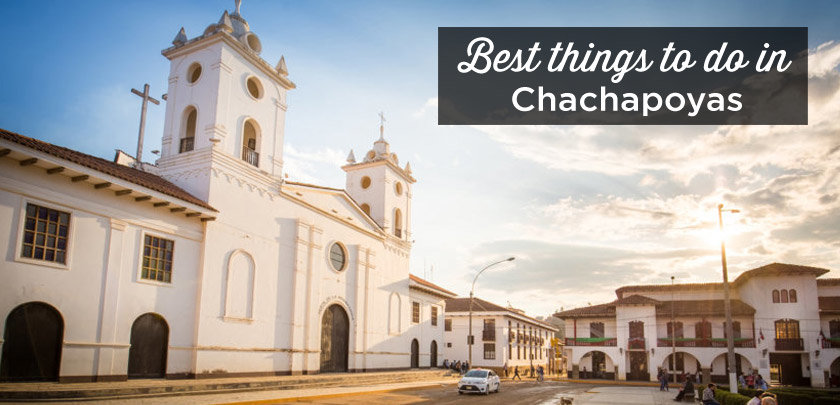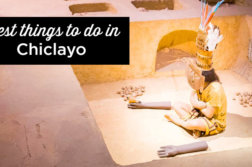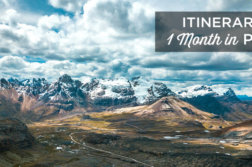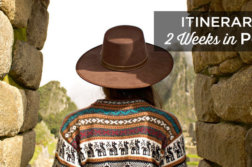Chachapoyas: The 12 Attractions You Shouldn’t Miss
Have you ever heard of Chachapoyas? Honestly, before I moved to Peru, I hadn’t either!
This hidden gem in northern Peru isn’t usually on the radar of most travelers—but it truly deserves a spot. After living nearly three years in the country, I couldn’t resist the call to explore this lesser-known city, its breathtaking surroundings, and the mysterious Chachapoya civilization.
Nestled in the Andes at an altitude of 7,660 feet, the Chachapoyas province is known for its lush landscapes, cloud-covered mountains, and rich pre-Inca history.
The name “Chachapoyas” means “Warriors of the Clouds”—a nod to the thick mist that often blankets the region. The Chachapoyas culture is believed to have emerged around the 8th century, reaching its peak in the 11th, before being absorbed by the Inca Empire and later the Spanish.
Driven by curiosity and a passion for off-the-beaten-path destinations in Peru, I set off to uncover the secrets of this captivating region.
Here’s my complete guide to what to do in Chachapoyas—with the best attractions, travel tips, and everything you need to plan your visit.
Sommaire
- Chachapoyas: The 12 Attractions You Shouldn’t Miss
- What to Do in Chachapoyas
- How to Get to Chachapoyas from Lima
- Where to stay in Chachapoyas? The best hotels
- What to bring to Chachapoyas?
- When to visit Chachapoyas?
- Tourist map of Chachapoyas
- Video of Chachapoyas
- Rent a Car in Peru
- Traveling to Peru? These articles will help you!
What to Do in Chachapoyas
1. The archaeological site of Kuélap
Kuélap is one of the absolute must-sees in Chachapoyas.
My guide picked me up at the hostel, and we headed out on a 2-hour bus ride. From the road, we could already spot Kuélap perched high in the mountains—at an altitude of 9,840 feet.
Often referred to as a “fortress”, Kuélap was in fact a walled city and the most important center of the Chachapoya civilization.
Its elevated position was both symbolic and strategic: closer to the gods and stars, and ideal for controlling the surrounding valley. The view alone is breathtaking!
Kuélap served as an administrative and religious hub, with over 420 structures, many of them circular. Only elite families lived here—being closer to the heavens was a privilege reserved for the upper class.
Because the Chachapoyas didn’t use gold or silver—favoring stone and ceramics—the Spanish conquistadors quickly lost interest and turned their attention to Cuzco instead.
At both ends of the complex, archaeologists have found mausoleums containing mummified bodies in the fetal position. This reflects the belief, shared by many pre-Hispanic cultures, that death was a return to the womb of Mother Earth—a necessary step toward rebirth.
Curiously, many stone projectiles used with slings were also discovered here. But they weren’t for defense—locals hurled them toward the sky to ask the gods for rain!
How to visit Kuélap
- You can visit Kuélap independently by taking a bus to Nuevo Tingo (1.5 hours from Chachapoyas), or opt for a guided tour from Chachapoyas.
- Want all the tips (transportation, tickets, current situation)? Don’t miss my full guide to the Kuélap fortress.
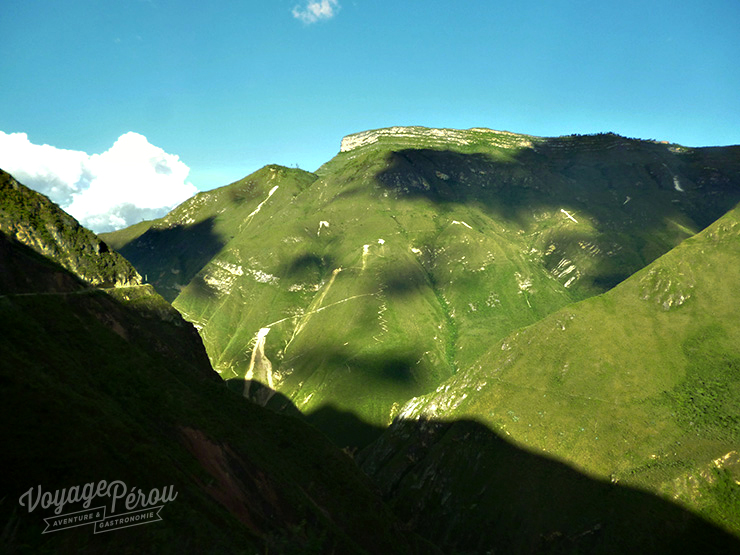

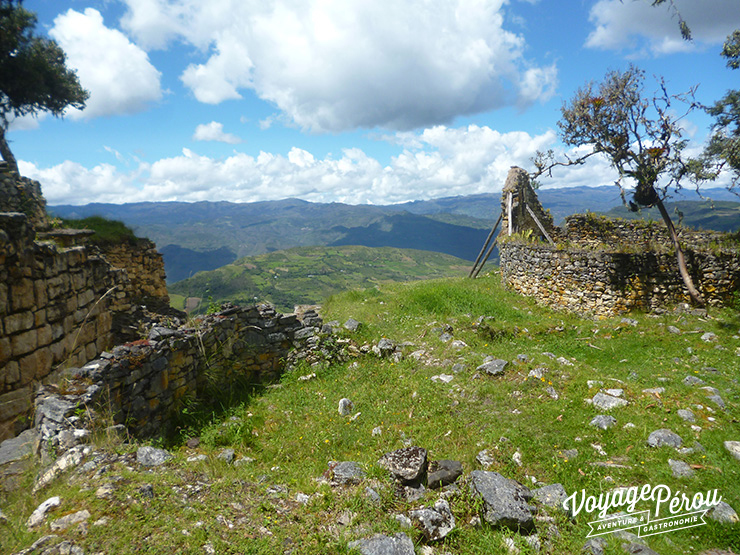
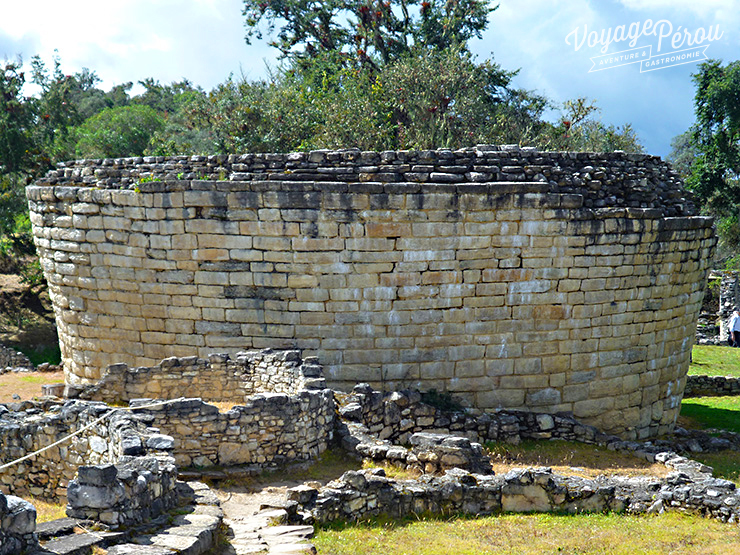
2. Gocta Waterfalls
After a short bus ride to the small village of Cocachimba, I started a three-hour hike through the lush northern Peruvian countryside.
The trail was a mix of ups and downs, made more intense by the tropical humidity—but it was all worth it. Along the way, I passed vibrant flowers, towering trees, colorful butterflies, and even stretches of coffee and sugar cane fields.
Little by little, the Gocta waterfalls revealed themselves in the distance—without a doubt one of the most breathtaking places to visit in Chachapoyas.
Gocta is made up of two powerful drops—760 and 1,770 feet—for a total height of 2,530 feet, making it one of the tallest waterfalls in the world. Standing at the base, you can’t help but feel tiny beneath the cascade.
If you’re visiting during the rainy season, the waterflow becomes even more intense. The impact against the rocks creates a fine mist that fills the air—refreshing and almost surreal.
After enjoying my very own natural “shower,” I made my way back to Cocachimba at my own pace, tired but proud of having done the entire trek on foot.
These incredible waterfalls were only officially “discovered” in 2005! German explorer Stefan Ziemendorff was searching for mummies when he spotted Gocta from a distance. But back then, there was no marked trail, and locals warned him not to go.
Why? According to local legends, the falls were guarded by enchanted mermaids, and anyone who got too close risked falling under their spell. Magical, right?
How to visit Gocta
- You can visit Gocta independently by taking a bus to Cocachimba, or choose a guided day tour from Chachapoyas.
- Want all the practical details? Read the Complete Guide to Gocta Falls.
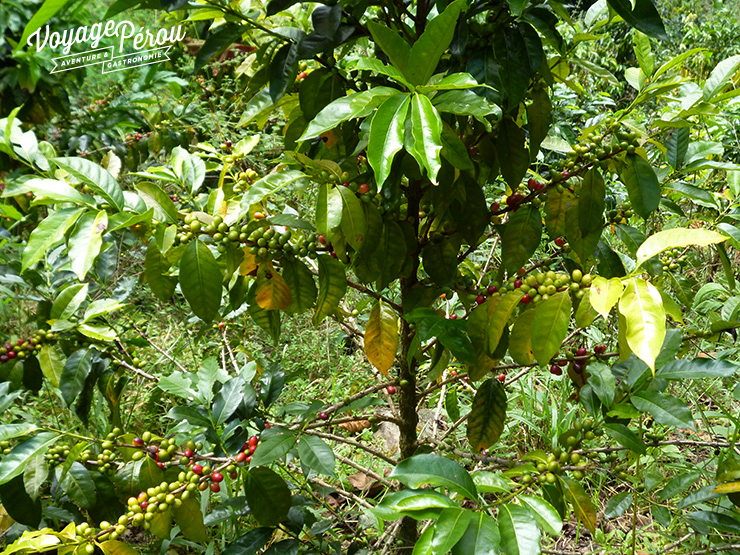
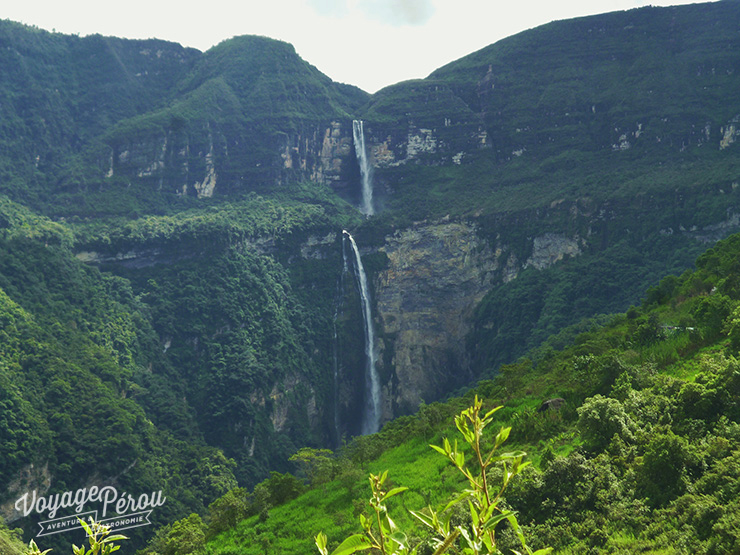
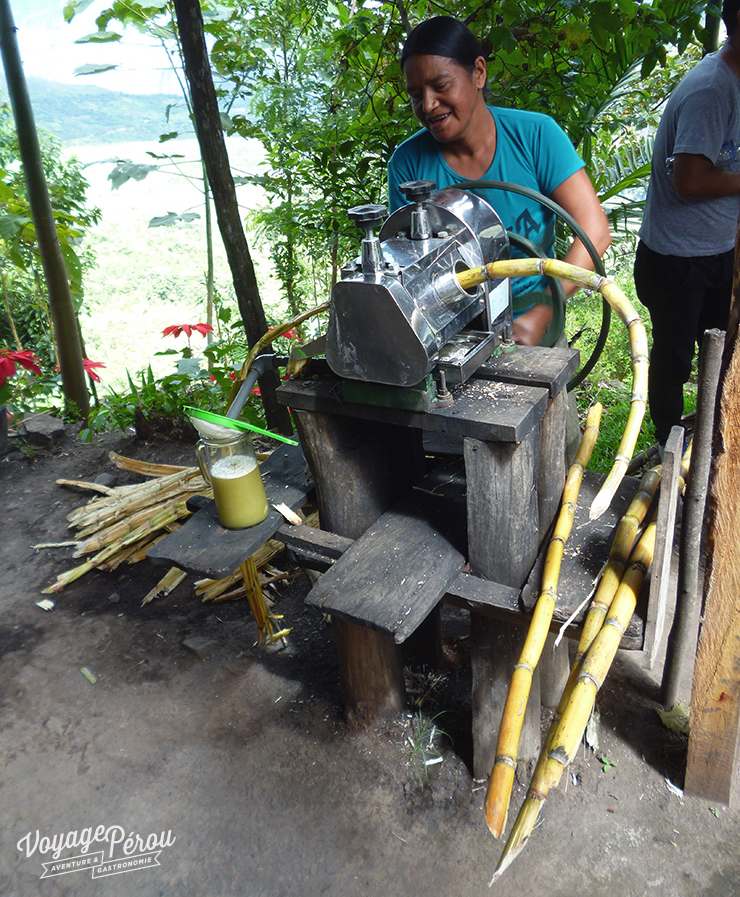
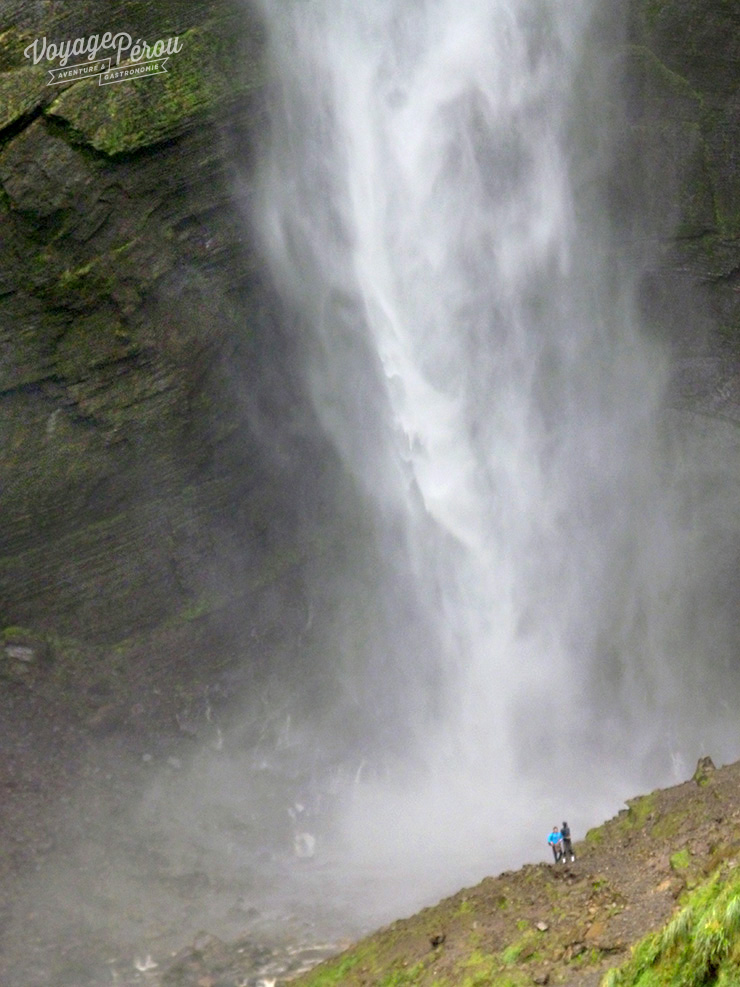
3. The city of Chachapoyas
The city of Chachapoyas, located in the province of Chachapoyas, is the capital of the department of Amazonas.
Besides being a convenient base for visiting the surrounding area, it is a beautiful and safe colonial city.
You can discover the Plaza de la Independencia and the Plaza de Armas, lined up with colonial buildings with beautiful balconies. There is the Gilberto Tenorio Ruiz room, which houses a small and interesting exhibition on the Chachapoyas (ceramics, textiles, mummies, etc.).
Nearby is the Casona Monsante, a typical Chachapoyan colonial house converted into a hotel, where you can find many begonias, orchids and 1500 exotic plants of the region!
I recommend a visit to the Chachapoyas market. In addition to discovering a colorful and vibrant commertial hub, you can have a very cheap breakfast or lunch (on the 2nd floor), or just have a nice fresh fruit juice.
To enjoy a magnificent view of the city, you can go to the Mirador de Luya Urco by the Pozo de Yanayacu.
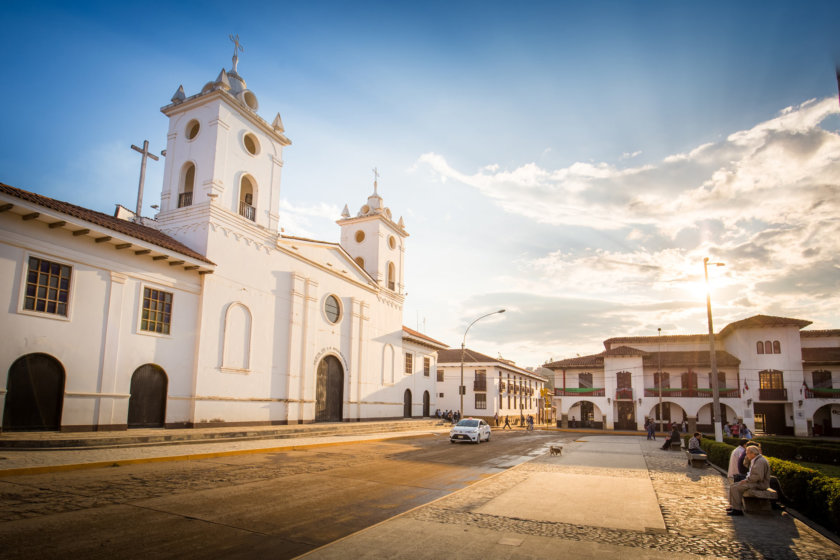
4. The Sarcophagi of Karajia
The site of Karajia or Carajia, contains tombs and sarcophagi that were of great importance to the Chachapoyas culture.
The sarcophagi, called “Purunmachacos”, are perched 656 feet above the ground in the middle of a cliff.
They measure up to 8 feet in height and have an anthropomorphic shape that imitates a funerary mask. They contained Chachapoya mummies and their study has revealed more about their beliefs and way of life.
The sarcophagi cannot be accessed for conservation, but it is possible to approach them from a few feet away.
- To learn more about the Karajia site and the sarcophagi, read the Full Article about Karajia!
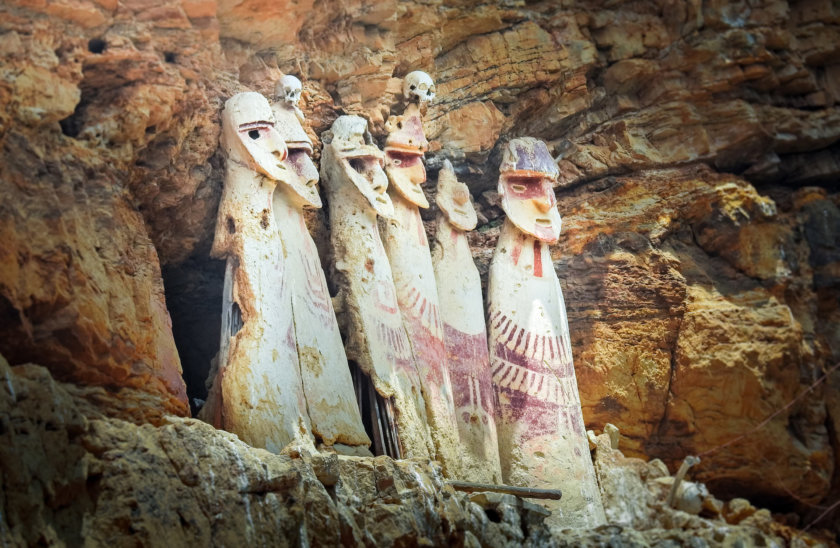
5. Quiocta Cave
This is a huge 1,640 feet deep cavern that you must enter with a guide.
It is necessary to wear boots since it’s muddy, and a flashlight because it is not conditioned (and you can’t see a thing).
There are bones and skulls, stalactites and stalagmites, cave paintings of the Chachapoyas culture and many bats (harmless), all in a mystical environment.
- To know everything about the visit of Quiocta, see the Article about the Quiocta Cave
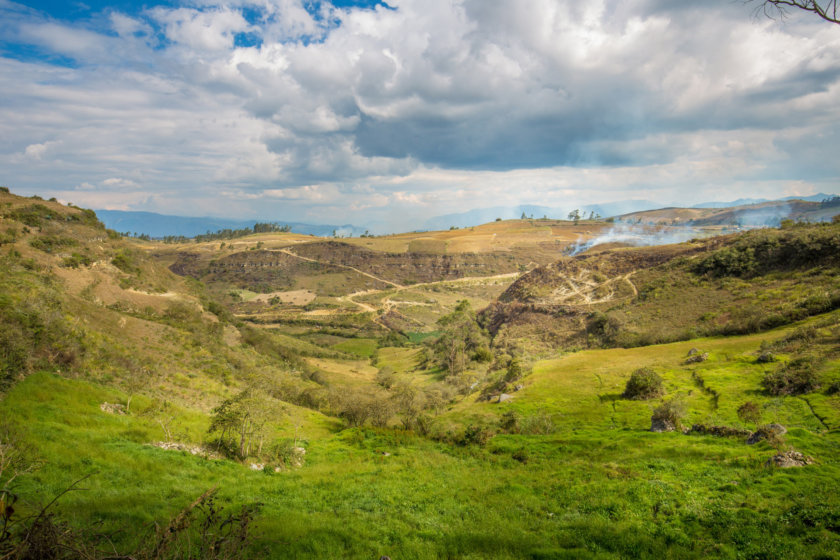
6. The mausoleums of Revash
This is a burial complex located on a cliff. There are small well-preserved houses with walls painted with red motifs.
They are actually mausoleums that contained the mummies of the Chachapoya elite.
There is still much mystery surrounding the site, but it is known that these mausoleums contained several mummies, only of people of great importance.
For more explanations about Revash, you can also visit the Museum of Leymebamba.
- To know everything about the site, discover My Complete Article about Revash
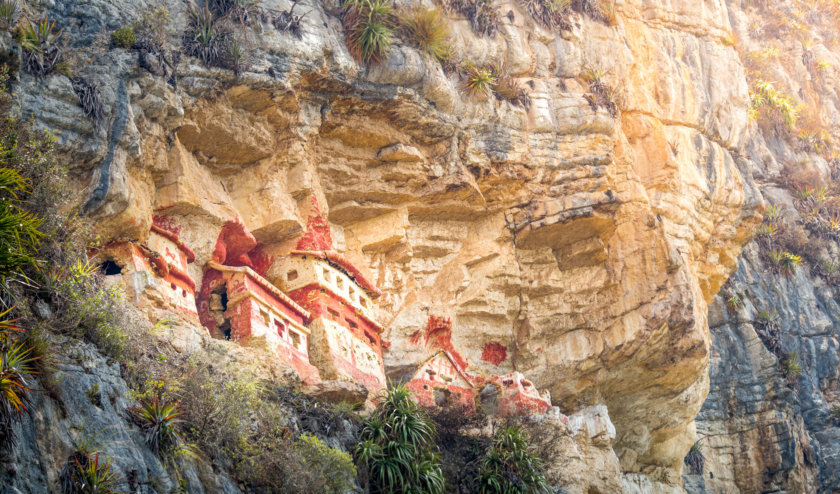
7. Leymebamba Museum
A 45-minute drive from Revash, the Leymebamba Museum is a real gem to see in Chachapoyas.
In a building inspired by the Chachapoya culture, there is a Chachapoyas’ collection of everyday and funerary objects.
The main attraction of the museum are the 200 mummies found in the Laguna de los Condores, which are preserved under glass in optimal conditions for their conservation.
The mummies date from 3 different periods: Chachapoya culture (800 to 1470), Chachapoya-Inca (1470-1532) and colonial period (1532-1570).
Take a walk through the garden, there are 100 species of local orchids!
Spend about 2 hours visiting, there is a lot to see!
- To learn more about the visit, read My Full Article about the Leymebamba Museum
8. Lake of the Condors
Here is a place completely off the tourist route in Chachapoyas.
Imagine a dark blue, almost black lake, lost in the jungle at 8,530 feet of altitude, surrounded by green mountains.
Here in 1997, 200 mummies were found in 6 mausoleums, with shell necklaces, ceramics, textiles, silver objects and other artifacts.
The lake was an important site of the Chachapoya culture and today you can see the remains of a village on the heights of the lake.
At 28 miles from civilization and 3 days of travel, alternating between horseback riding and walking through mud to get there, it is quite an adventure that awaits you!
It is necessary to go with a guide because the trail is not marked.
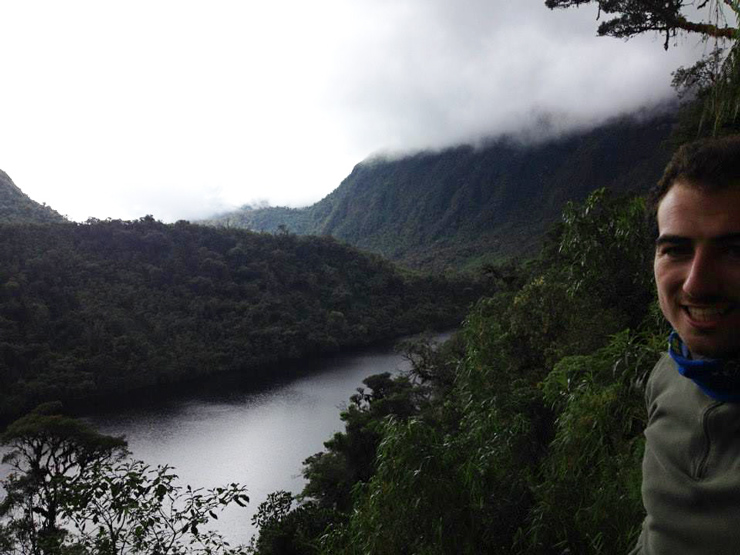
9. Yumbilla Waterfall
The fifth highest waterfall in the world, the Yumbilla waterfall (2,940 ft) is higher than the Gocta waterfall and offers an interesting challenge to those who like to hike through nature.
It is reached by walking along a trail of exotic vegetation, with various orchids, butterflies, parrots, hummingbirds and (if you are lucky) yellow-tailed woolly monkeys.
As a bonus, you can swim at the foot of the waterfall! Especially since it is not very touristy and you are often alone.
How to visit Yumbilla
- By public transport: from Chachapoyas take a colectivo to Pedro Ruiz, then a mototaxi to Cuispes (25 min)
- By car: follow the road Chachapoyas- Cuispes by car (1h15), then Cuispes-Yumbilla (2h30)
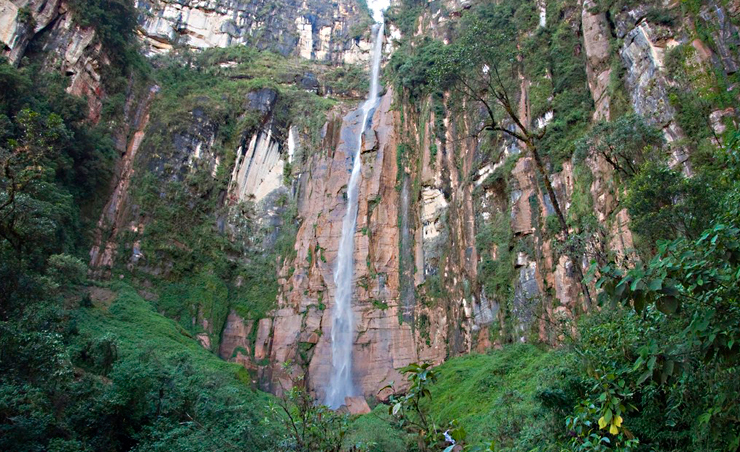
10. The Huaylla Belen Valley
A little less than 3 hours drive from Chachapoyas is Huaylla-Belen, a green valley at 9,020 ft altitude. It is crossed by a long, narrow river called the “Silver Snake“, in reference to its numerous meanders.
The surrounding area is full of tropical rainforests, natural habitat of many birds.
If you want to hike in Chachapoyas, the Gran Vilaya route passes through Huaylla Belen.
The Gran Vilaya is a collection of archaeological sites scattered throughout the valley, a place as important to the Chachapoyas as the Sacred Valley was to the Incas!
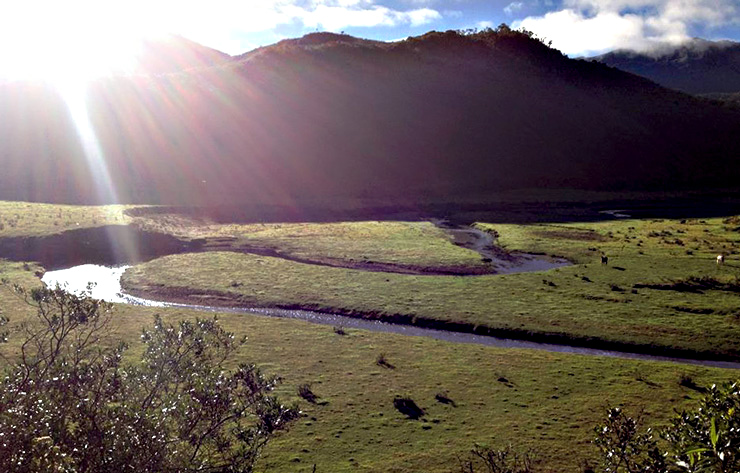
11. Sonche Canyon
The first step is to go to Huancas, a town famous for its pottery, either by bus (20 min) or walking from the town of Chachapoyas.
At walk will take you to the Sonche Canyon, 3,115 feet deep and crossed by the Sonche River. A 5-minute walk will take you to a lookout point that offers a beautiful view of the site.
Alternatively, a 1 hour hike north of Huancas will take you to the Huanca Urco hill, which also offers a superb view, and where the Sonche, Vitaya and Utcubamba rivers converge.
- Find out all about this incredible destination in this Complete Article about the Sonche Canyon and plan your visit with the best tips.
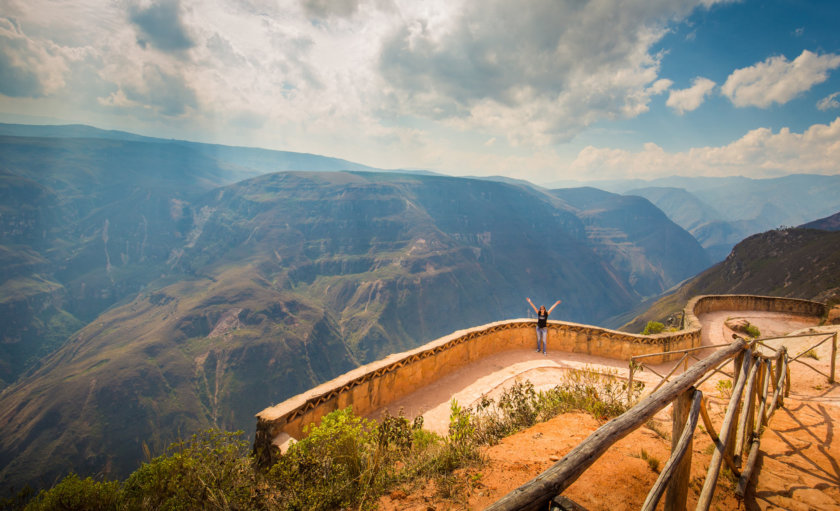
12. Mendoza
Mendoza, the capital of Rodriguez de Mendoza, is located about 3 hours southeast of Chachapoyas.
If you’re a coffee lover, you’ll be happy to know this is a very fertile region and the main coffee-producing area in the Amazonas region!
Beyond visiting a local coffee cooperative, you can also explore the beautiful Huamanpata Lagoon, unwind at the Tocuya hot springs, or venture into the mysterious Omia cave.
- To learn all about Mendoza, check out my Complete Guide to Mendoza!
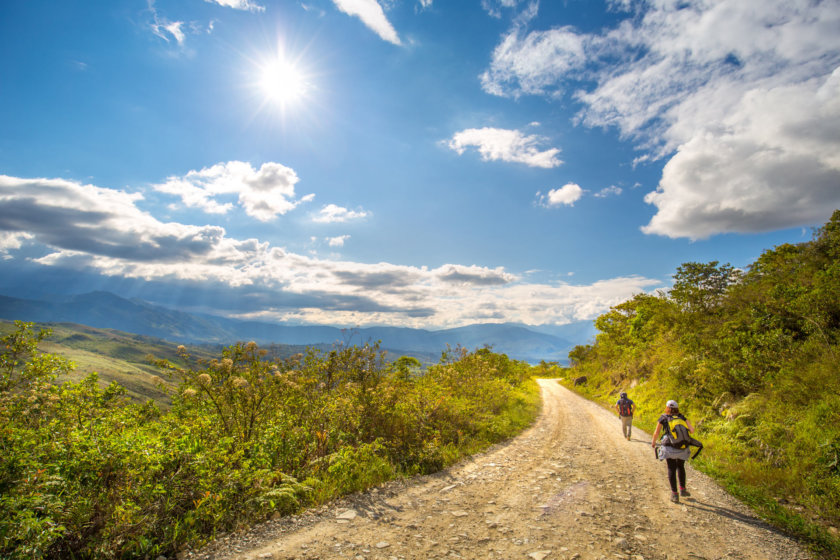
How to Get to Chachapoyas from Lima
By Plane
You can fly from Lima to Chachapoyas with Atsa Airlines (1h20), or take a flight from Lima to Jaén (1h30) with Latam, then a 4-hour bus ride to Chachapoyas.
If you’re looking for a cheap domestic flight to Chachapoyas or the best international flight to Peru, I recommend using our flight comparison tool in partnership with Skyscanner—the easiest way to find the best deals!
By Bus from Lima
The most economical way is to take a direct bus from Lima to Chachapoyas—a journey of about 23 hours with companies like Civa or Movil Tours.
That’s how I traveled to Chachapoyas. Sure, it’s long—but the landscapes are spectacular, and there’s no need to switch buses along the way.
Personally, I enjoy bus rides and a bit of adventure! Just keep in mind that during the rainy season, landslides are common and roadblocks may occur.
Where to stay in Chachapoyas? The best hotels
There are several accommodation options for all budgets, from backpackers to luxury hotels and eco-lodges. Here are my three recommendations for accommodation in Chachapoyas:
-
Chachapoyas Backpackers Hostal Boutique: Nice rooms in an excellent location. They offer bicycle rental service for nature lovers and shuttle service to the airport. 24 hour reception. From 32 USD with breakfast included.
- Hotel Fundo Achamaqui: Beautiful colonial style building with views towards the mountains. Daily buffet breakfast with pastries is served. It has a bar where you can enjoy a delicious Pisco Sour. Starting at 63 USD per night.
- La Xalca Hôtel: A very nice hotel in Chachapoyas, two blocks from the Plaza de Armas. A magnificent courtyard, spacious rooms, garden and mountain view. Free Wifi and very good breakfast, excellent value for money and superior comfort! From only 85 USD per night, with breakfast included.
What to bring to Chachapoyas?
- Good walking shoes
- A raincoat, as it rains quite often (especially from December to the end of April)
- Sunscreen
- Sufficient water.
- A hat to cover you from the sun
- Don’t forget snacks for the tours, as it is not easy to find them along the way.
When to visit Chachapoyas?
The Amazon is a very green region thanks to the copious rain.
In fact, the rainy season runs from November to April. Therefore, it is best to avoid going at this time of the year, as roads and trails are more difficult to travel.
The best time to visit Chachapoyas is from May to October.
Tourist map of Chachapoyas
Here is a handy map that will help you locate the must-see attractions in Chachapoyas.
Video of Chachapoyas
Still not convinced to visit Chachapoyas? Maybe this video will change your mind!
Rent a Car in Peru
Renting a car is one of the best ways to explore Peru at your own pace and make the most of your trip!
Personally, I always use Booking.com Cars for a few key reasons:
- Easily compare prices from all major rental agencies in one place—finding the best deal has never been easier!
- Free cancellation on most bookings, so you can reserve with peace of mind.
- Better insurance coverage at a lower price than rental companies—saving you money with no extra effort.
Click the button below to find the best car rental deals in Peru:
Rent a car
Book entrance tickets and guided visits
Take a travel insurance
Book a tour
✈️ Book your flight
Traveling to Peru? These articles will help you!
Discover all my articles about Peru: All my tips and itineraries to plan your trip in one place!
40 EPIC Things to Do in Peru (+ My Best Tips)
- Itinerary: 5-6 days in Peru – Lima, Arequipa, Colca Canyon, Cusco, Sacred Valley and Machu Picchu
- Itinerary: 7-8 days in Peru – See the maximum in one week
- Itinerary: 10 days in Peru – The ideal itinerary for a short stay in Peru
- Itinerary: 2 weeks in Peru – The classic route
- Itinerary: 15 days in Peru – An itinerary that includes northern Peru
- Itinerary: 3 weeks in Peru
- Itinerary: 3 weeks in Peru + Bolivia – The best itinerary for visiting both countries
- Itinerary: 1 month in Peru – What to do and see in 30-31 days
You’re using Pinterest? Here is the picture to pin!
